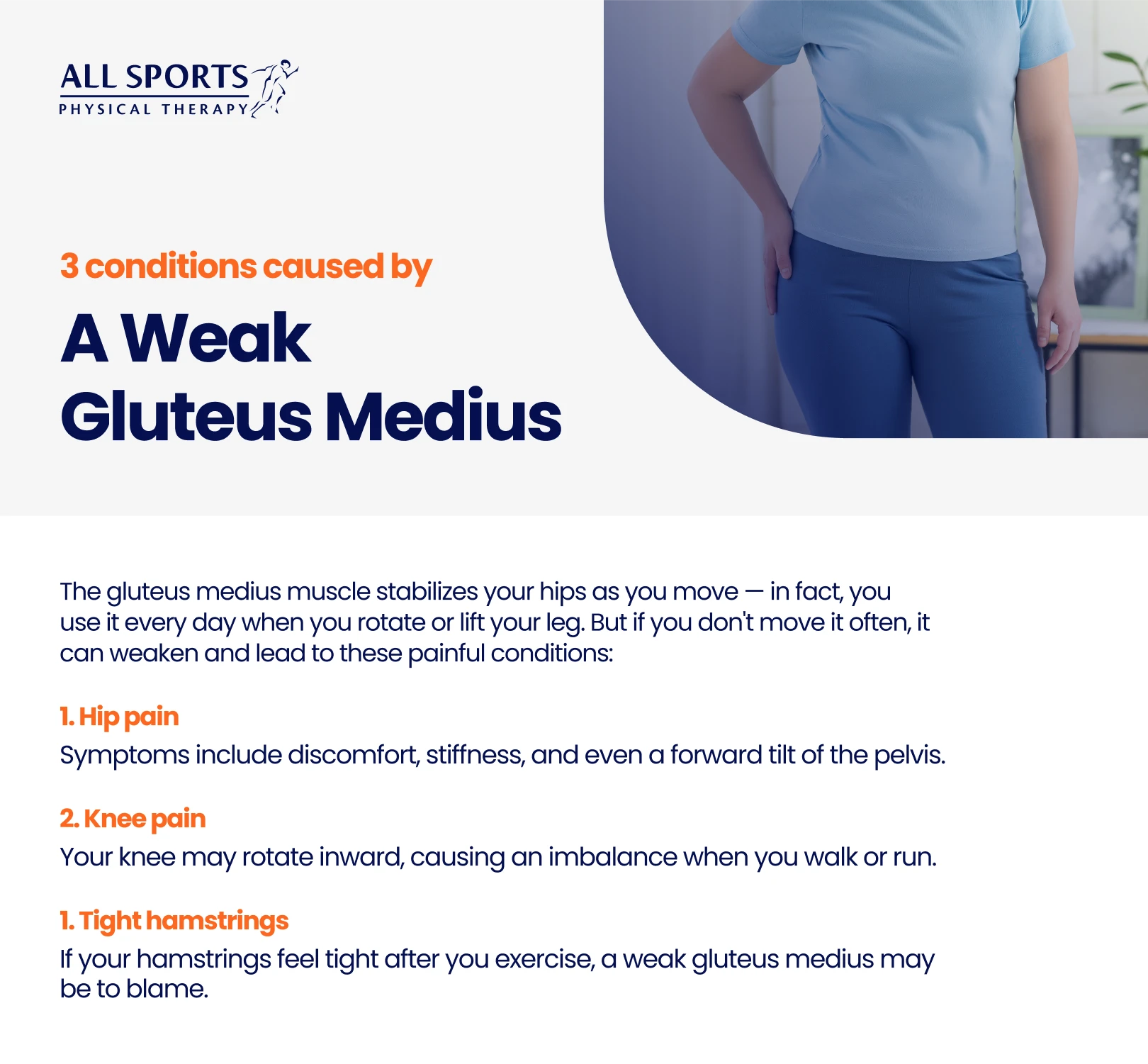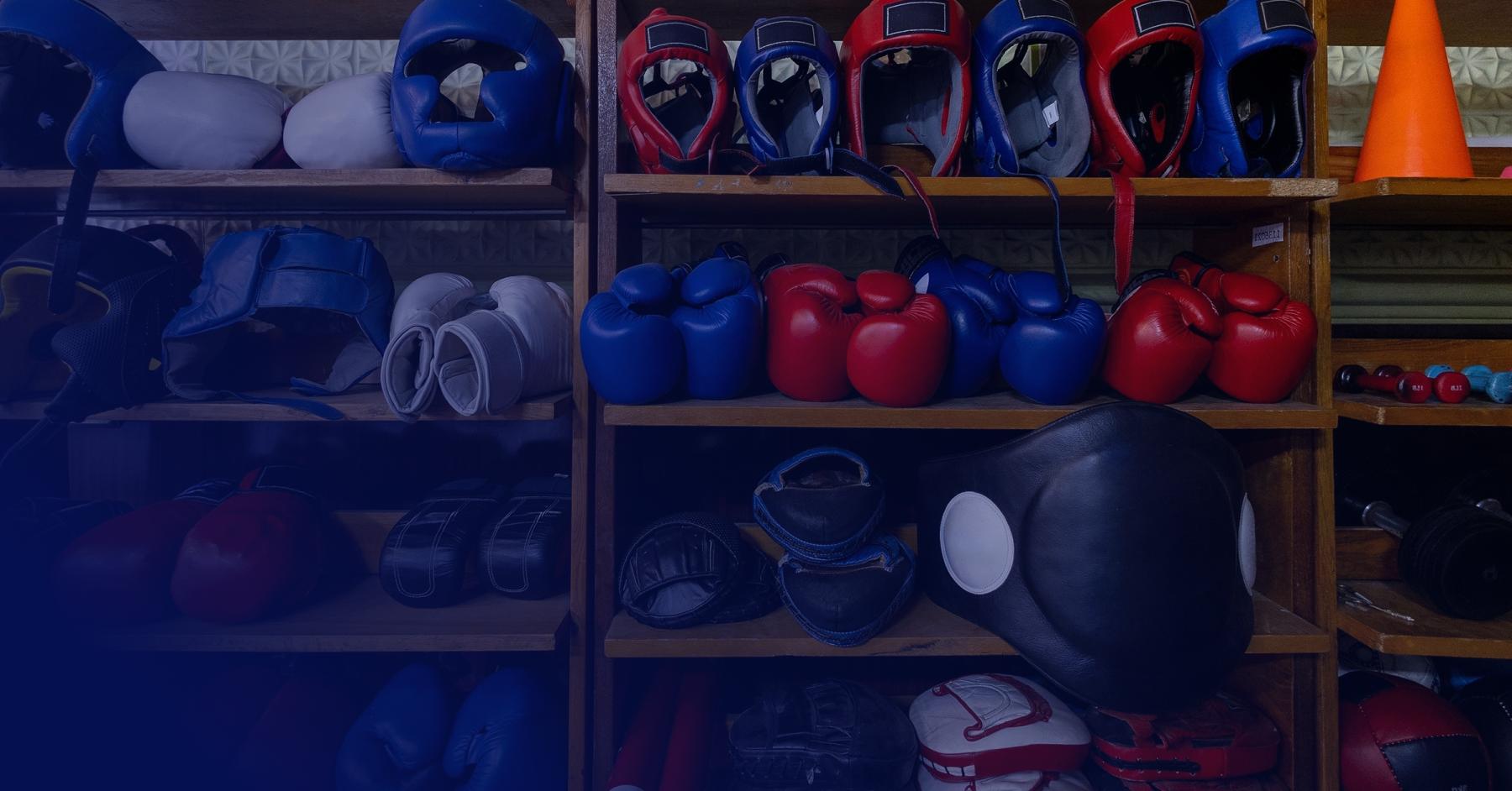3 Conditions A Weak Gluteus Medius Can Cause
Hip Injuries, Physical Rehabilitation

Have hip pain? It could be due to a weak gluteus medius muscle.
You’ve probably never heard of your gluteus medius muscle, but you use it every day when you rotate or lift your leg. It’s also what stabilizes your hips as you move.
The gluteus medius muscle is one of the three muscles in the buttocks, which include the gluteus maximus and gluteus minimus. The gluteus medius wraps about your hip bone and attaches to your femur, the long bone in your upper leg. But as with any muscle in your body, the gluteus medius can weaken, especially if you work a desk job where you sit for long hours or have poor posture. If that’s the case, you’ll notice these three conditions signaling you have a weak gluteus medius.
Three conditions caused by a weak gluteus medius
Whenever you run or walk forward, you use your gluteus maximus muscles. However, when you move side to side, your gluteus medius is in play. Since you usually don’t often lift your leg or move it sideways, the gluteus medius is more prone to weakness.
As mentioned, the gluteus medius stabilizes the hip as well as the spine. Therefore, if it’s weak, it can cause problems extending beyond the buttocks, such as:
Hip pain. The most prominent symptoms of a weak gluteus are hip pain and stiffness. It may also lead to a forward tilt of the pelvis.
Knee pain. If your gluteus medius is not strong, your knee may rotate inward, causing an imbalance when you walk or run. This can result in a painful knee condition known as patellofemoral pain, or runner’s knee. One study found that subjects with weak gluteus muscles had a higher incidence of knee pain.
Tight hamstrings. If your hamstrings feel tight after you exercise, a weak gluteus medius may be to blame.
Four exercises to strengthen your gluteus medius

As with any other muscle, you can strengthen your gluteus medius with exercise. Try these exercises at home with the aid of a resistance band and a mat. You can also consult with a physical therapist on other exercises or to make sure you’re doing these correctly.
Supine hip lift. Lie on your back on the floor with your palms at your sides. Bend your knees and move your heels beneath them. As you press your heels and palms into the floor, squeeze your glutes and move your hips toward the ceiling. Hold for a count of two. Return to the supine position and do it 10 to 15 times.
Lateral band walks. Wrap a resistance band around your legs just above your knees. As you stand with your feet hip-width apart, squat down slightly, keeping your back straight, your chin raised, and your hands in a praying position. Step to your right so your feet are shoulder-width apart. Then, step laterally to the right with your left foot until your feet return to the original position. Repeat 10 to 15 more times, shifting between going left and right.
Banded hip abduction. Lie sideways on the floor, resting your head on the ground or on your elbow. With a resistance band around your ankles, lift your top leg as high as you can. The energy for the lift should come from your heels. As you raise your leg, rotate your leg slightly inward so your toes point toward the ground and your heels to the ceiling. Slowly lower your leg and repeat several times.
Clamshells. Lie on your side, resting your head on one arm while you keep your body straight. Keep the other arm at your hip. Bend both knees until you reach a 90-degree angle with your feet aligned with your body. Keeping your feet together, raise one of your knees until the knee is perpendicular to the floor. Slowly bring the knee down. Repeat 10 times. For an extra workout, wrap a resistance band around your thighs.
Walk without hip pain
Bothered by hip pain? As a leading sports medicine center, our therapists at All Sports Physical Therapy can help diagnose the cause of your discomfort and recommend a treatment plan to get you feeling like yourself again. You’re only a step away from pain relief — contact us today for a consultation.



